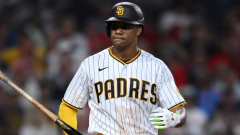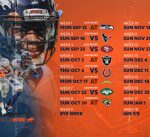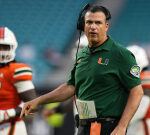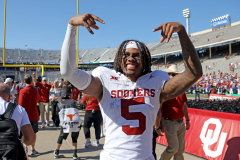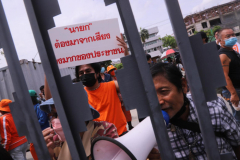Juan Soto and Josh Hader haven’t been the game-changers that the Padres wanted – but they’re far from alone among those moved over the summer.
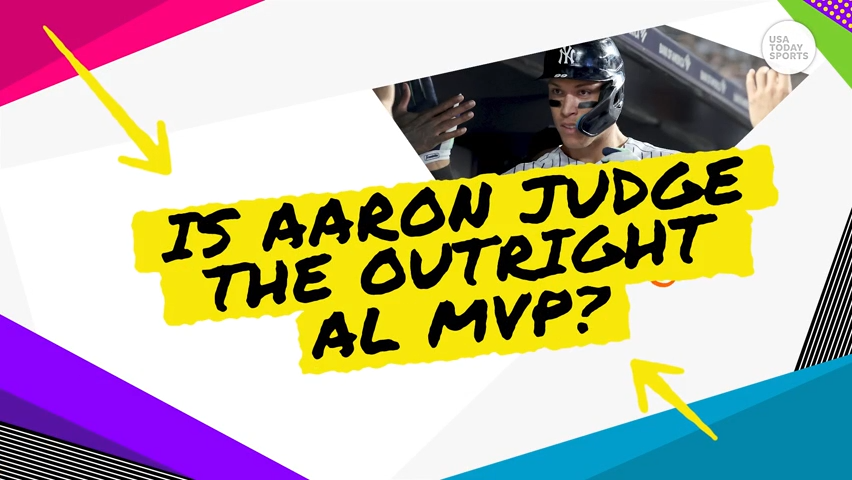
PHOENIX — The San Diego Padres should have clinched a playoff berth by now, maybe even scaring the Los Angeles Dodgers with their prized trade-deadline acquisitions.
The New York Yankees should have a deep starting rotation, all set to overcome the Houston Astros in the playoffs.
The Minnesota Twins should have clinched the AL Central and be selling playoff tickets.
The New York Mets should be deeper and stronger than any team in the National League (besides the Dodgers) in their bid for their first World Series title since 1986.
Well, strange things can happen when players switch teams at the trade deadline.
PUJOLS: 700th home run is a once-in-a-lifetime feat
NEWSLETTER: Get the latest sports news straight to your inbox
There are bags to pack. Teammates to meet. People to impress. Fans to please. Self-inflicted pressure.
And a comfort level that suddenly has been shredded, leaving even the greatest players desperately searching for answers.
The Padres made the greatest trade deadline moves acquiring Juan Soto and first baseman Josh Bell from Washington, alongside All-Star closer Josh Hader and slugger Brandon Drury.
Well, nearly two months later, and the Padres’ improvement has been minimal at best, going just 23-22, even after their recent five-game winning streak.
Soto endured the worst slump of his career, hitting .063 (3-for-48) without an extra-base hit in a 17-game stretch. He’s hitting .234 with a career-low .787 OPS in 43 games since his arrival with just 16 RBI.
Bell, who accompanied Soto in the same trade, is doing even worse. He was hitting .301 with an .807 OPS this season in Washington, and now is hitting just .196 with a .600 OPS, producing eight extra-base hits and 11 RBI in 44 games for San Diego.
“Obviously, we would all love to be hitting .400 the first two or three weeks after getting traded over,’’ Bell told USA TODAY Sports. “You want to help your team win and make a name for yourself, especially in September. But it’s this last stretch that people will remember us for.’’
Hader also endured an awful stretch after the trade, going through a brutal five-game span in which he coughed up 11 hits, seven walks and 12 earned runs in 2⅔ innings (14.50 ERA). Hader appears to have acclimated though, giving up two hits and one run in seven September appearances.
“There’s no excuses,’’ Hader said. “For me personally, it was a mechanics issue, but you do have to get a sense of comfort back. You’re meeting new people. Getting into a new routine. Different clubhouse. New guys. New personnel.’’
And, of course, the pressure.
Look what’s happened with Darin Ruf of the Mets. He was supposed to be the perfect fit as a right-handed DH in the Mets’ lineup. But after hitting 11 homers with 38 RBI with the San Francisco Giants, Ruf is hitting just .155 with a .215 OBP and .207 slugging percentage since being traded to the Mets. He’s still looking for his first homer.
The Twins thought they had their closer in All-Star Jorge Lopez of the Baltimore Orioles, who saved 19 games and had a 1.68 ERA. He has been dreadful since his arrival, yielding a 5.60 ERA, allowing 35 baserunners in 17⅔ innings. Tyler Mahle, the starter they acquired from Cincinnati, is out for the year.
The Yankees’ trade pickups have gone belly-up, too. Frankie Montas, who is 1-3 with a 6.35 ERA in his eight starts since being traded from Oakland, is back on the injured list with shoulder inflammation. And outfielder Andrew Benintendi, who was acquired from the Royals, is out for the rest of the regular season with a broken right hamate bone.
There have been precious few players who have reached expectations since being traded in late July and August. Seattle Mariners starter Luis Castillo has been terrific since leaving the Cincinnati Reds, going 3-2 with a 2.83 ERA in nine starts, yielding 46 hits and striking out 64 in 54 innings.
The Mariners were impressed enough to give him a five-year, $108 million contract extension.
And no one cleaned up like the St. Louis Cardinals, who acquired starters Jordan Montgomery from the Yankees and Jose Quintana from the Pittsburgh Pirates. All they’ve done is go 8-3 with a 2.24 ERA in 19 starts, leading the Cardinals to the brink of the NL Central title.
Still, the struggles by players traded at the deadline have far outweighed those living up to expectations, making you wonder just how daunting it is for players to have their lives uprooted midseason.
“It’s not as easy as people think,’’ said Padres All-Star third baseman Manny Machado, who didn’t provide quite the impact the Dodgers envisioned when they acquired him in 2018 from the Baltimore Orioles. “You’re changing clubhouses. You’re moving across the country. You’ve got to take care of your family. You’re dealing with different coaches. You’re in a different division. A different coast. Everything.
“It’s not just packing a bag and playing baseball. It takes a little time to get used to getting back onto that train. That’s the beauty of baseball. Baseball is a sport of routine, and once your routine gets out of whack, just like when you’re traded, it takes time to get back on track.’’
The Padres still are in the driver’s seat for a postseason berth, their first in a full season since 2006. When the playoffs start Oct. 5, they believe they’ll be just fine.
And they should find their comfort level by the time October rolls around, says a man who has been traded midseason three times and played on nine teams in his 14-year career.
“It’s an adjustment for sure,’’ said Arizona Diamondbacks reliever Mark Melancon. “The first time you might have the most pressure, especially outside pressure. But after that, you realize they traded for who you are, so you just have to continue to do what you’ve been doing.
“The saving grace is that you’re usually going to a good team, so the excitement there takes over, you get a boost, you get a life, all of the other things are going to come together. ’’
It has taken time, longer than the Padres ever anticipated, but all could be forgotten once the playoffs begin, as long as they’re participants.
“You start with a new slate then, and as long as we’re playing up to our standards,’’ Bell says, “hey, why not us?”
What if Cardinals had traded Pujols?
Albert Pujols, who just completed Mount Rushmore as the fourth player with 700 home runs, uses his 13th-round draft selection as motivation to this day .
“I never forgot,’’ Pujols said. “I remind myself all of the time.’’
Well, Jeff Scott, who was the St. Louis Cardinals scouting director when they drafted him with the 402nd pick, reminds himself too what they almost missed.
The Cardinals thoroughly scouted Pujols, but didn’t bother including him on their board of top 125 players and even picked 15 players before Pujols.
Scott confesses that he never even saw Pujols play at Maple Woods Community College in nearby Kansas City. He played with Cardinals Hall of Fame manager Whitey Herzog’s grandson and was roommates with then-Royals GM Herk Robinson’s son.
“Mike Roberts was the scout on him,’’ Scott said, “and he said he’s got a pretty good bat. The Royals worked him out. So did Tampa. The Rays were looking at him as a catcher.
“Finally, the 13th round rolls around, and we say, ‘OK, boys, that will be our next pick.’”
They got lucky again a year later when they nearly traded Pujols. The Cardinals needed a catcher, and eyed San Diego Padres catcher Carlos Hernandez. The Padres wanted Pujols or outfielder Ben Johnson, who was in the same draft class as Pujols, but selected in the fourth round.
“Brad Sloan and Ken Bracey, who worked for the Padres and lived in Peoria where they saw Pujols a lot, really wanted Pujols,’’ Scott said. “I got a call from [former Cardinals GM] Walt Jocketty and he says, ‘Would you trade Johnson or Pujols for Hernandez?’ I told them I wouldn’t trade either one.’’
The Cardinals wound up trading Johnson and veteran reliever Heathcliff Slocumb for Hernandez and minor leaguer Nathan Tebbs.
Johnson’s career lasted 98 games.
He hit seven home runs, 693 fewer than Pujols.
“Thank god Pujols wasn’t the one who was traded,’’ Scott said. “Can you imagine?
“To this day, I can’t tell you who we picked in the ninth round, the 10th round, the 11th round, the 12th round, but I sure remember who we drafted in that 13th round.’’
College friends
Arizona Diamondbacks outfielder Jordan Luplow, who went to college and played baseball at Fresno State for two seasons with Yankees star Aaron Judge, wishes he could say that he instantly predicted stardom.
It wasn’t until Judge’s final year at Fresno State in 2013, Luplow says, that it finally hit him.
“Maybe I was just too close to it, maybe being in the game together was too much to see what he could turn into,’’ Luplow says, “and not knowing the big leagues and how that all works.
“Well, I remember Stanford coming to our place for a weekend series, and Mark Appel was t

